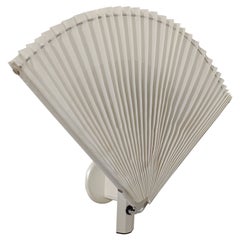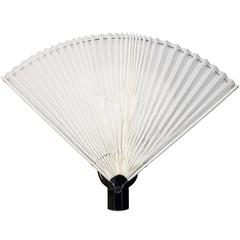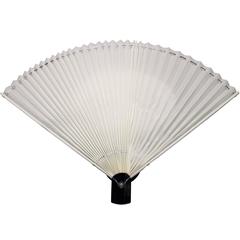Flos Butterfly Scarpa
Vintage 1980s Italian Wall Lights and Sconces
Metal, Enamel
Recent Sales
Vintage 1980s Italian Wall Lights and Sconces
Aluminum
Vintage 1980s Italian Wall Lights and Sconces
Aluminum
Vintage 1980s Italian Floor Lamps
Steel
Vintage 1980s Italian Mid-Century Modern Floor Lamps
Metal
Vintage 1970s Italian Modern Floor Lamps
Aluminum
Vintage 1980s Italian Mid-Century Modern Wall Lights and Sconces
Metal
Vintage 1980s Italian Post-Modern Wall Lights and Sconces
Metal
Vintage 1980s Italian Mid-Century Modern Wall Lights and Sconces
Metal
Vintage 1980s Italian Mid-Century Modern Wall Lights and Sconces
Metal
Vintage 1980s Italian Mid-Century Modern Wall Lights and Sconces
Metal
Vintage 1980s Italian Mid-Century Modern Floor Lamps
Aluminum
Late 20th Century Floor Lamps
Metal
Vintage 1980s Italian Industrial Wall Lights and Sconces
Metal
Vintage 1980s Italian Post-Modern Floor Lamps
Metal, Aluminum, Chrome
Vintage 1980s Italian Mid-Century Modern Floor Lamps
Aluminum, Enamel
People Also Browsed
21st Century and Contemporary American Scandinavian Modern Wall Lights a...
Brass, Nickel
2010s Table Lamps
Iron
Vintage 1950s German Mid-Century Modern Stools
Metal
21st Century and Contemporary Italian Art Deco Wall Lights and Sconces
Brass
2010s Italian Mid-Century Modern Table Lamps
Brass
2010s Belgian Modern Club Chairs
Linen
21st Century and Contemporary Swedish Mid-Century Modern Table Lamps
Textile
Vintage 1960s Italian Mid-Century Modern Flush Mount
Brass, Nickel
2010s Belgian Modern Club Chairs
Linen
21st Century and Contemporary American Scandinavian Modern Wall Lights a...
Brass
21st Century and Contemporary Swedish Scandinavian Modern Wall Lights an...
Metal
Vintage 1970s Italian Mid-Century Modern Wall Lights and Sconces
Metal, Aluminum
2010s Indian Modern Wall Lights and Sconces
Brass
2010s South African Minimalist Night Stands
Burl, Poplar
Vintage 1970s Italian Mid-Century Modern Bedroom Sets
Steel, Chrome
2010s American Brutalist Wall Lights and Sconces
Brass
Afra & Tobia Scarpa for sale on 1stDibs
Widely recognized as superstars of postmodern Italian design, husband-and-wife team Afra and Tobia Scarpa (1937–2011; b. 1935) collaboratively created chairs, sofas and other furniture that work equally well in both traditional and cutting-edge environments.
Ranging from architecture and interior design to furniture and clothing, the Scarpas’ practice from its beginnings in the mid-1950s to the 21st century has included a diverse scope of projects combining new technology with thoughtful function and sculptural yet simple forms.
Afra Bianchin and Tobia Scarpa met as architecture students at the Università Iuav di Venezia. In a class led by architect and furniture designer Franco Albini, they created their first collaborative piece, the Pigreco armchair, later produced with Gavina. After graduating in 1957, Tobia worked for Murano glass company Venini & Co. before the couple opened a studio in Afra’s hometown, Montebelluna, in 1960. (Tobia, the son of famed glass artist and architect Carlo Scarpa, was born in Venice.)
For Afra and Tobia, a close collaborative process was pivotal to the success of their designs. The duo was also prolific — they designed for the most influential European manufacturers, including B&B Italia, Cassina, Knoll and FLOS. With respect to the latter, Afra and Tobia were among the legendary Italian lighting maker’s earliest collaborators, and their pioneering designs for the brand included the Papillon lamp, one of the first fixtures to use halogen technology. Their most recognized designs include the Bastiano sofa (1962), the Vanessa bed (1959), the Coronado sofa (1966) and the Soriana seating collection (1970). Work on the Soriana sofa began in late 1969 for an early 1970 debut, and it feels as radical today as it did in its heyday.
Architecture was also a central part of Afra and Tobia’s practice, which spanned residential buildings and factories for Italian companies such as Benetton. Their commissions for the global fashion brand included numerous industrial projects, from textile plants to storefronts. By 1985, Afra and Tobia Scarpa’s work was celebrated in a 30-year retrospective at Center Four in Queens, New York. Looking around the 30,000-square-foot exhibition space, Afra joked to the New York Times, “Seeing all those things makes us feel very tired, and now we feel that maybe we worked too much.”
It was not too much for their legacy, as Afra and Tobia Scarpa’s work continues to inspire new generations. Scarpa designs are in collections at the Louvre, the Museum of Modern Art and the Victoria and Albert Museum. The couple was awarded the Compasso d’Oro in 1970 for the Soriana armchair.
Find vintage Afra & Tobia Scarpa lounge chairs, dining chairs, floor lamps and other furniture today on 1stDibs.
Finding the Right Lighting for You
The right table lamp, outwardly sculptural chandelier or understated wall pendant can work wonders for your home. While we’re indebted to thinkers like Thomas Edison for critically important advancements in lighting and electricity, we’re still finding new ways to customize illumination to fit our personal spaces all these years later. A wide range of antique and vintage lighting can be found on 1stDibs.
Today, lighting designers like the self-taught Bec Brittain have used the flexible structure of LEDs to craft glamorous solutions by working with what is typically considered a harsh lighting source. By integrating glass and mirrors, reflection can be used to soften the glow from LEDs and warmly welcome light into any space.
Although contemporary innovators continue to impress, some of the classics can’t be beat.
Just as gazing at the stars allows you to glimpse the universe’s past, vintage chandeliers like those designed by Gino Sarfatti and J. & L. Lobmeyr, for example, put on a similarly stunning show, each with a rich story to tell.
As dazzling as it is, the Arco lamp, on the other hand, prioritizes functionality — it’s wholly mobile, no drilling required. Designed in 1962 by architect-product designers Achille & Pier Giacomo Castiglioni, the piece takes the traditional form of a streetlamp and creates an elegant, arching floor fixture for at-home use.
There is no shortage of modernist lighting similarly prized by collectors and casual enthusiasts alike — there are Art Deco table lamps created in a universally appreciated style, the Tripod floor lamp by T.H. Robsjohn-Gibbings, Greta Magnusson Grossman's sleek and minimalist Grasshopper lamps and, of course, the wealth of mid-century experimental lighting that emerged from Italian artisans at Arredoluce, FLOS and many more are hallmarks in illumination innovation.
With decades of design evolution behind it, home lighting is no longer just practical. Crystalline shaping by designers like Gabriel Scott turns every lighting apparatus into a luxury accessory. A new installation doesn’t merely showcase a space; carefully chosen ceiling lights, table lamps and floor lamps can create a mood, spotlight a favorite piece or highlight your unique personality.
The sparkle that your space has been missing is waiting for you amid the growing collection of antique, vintage and contemporary lighting for sale on 1stDibs.


